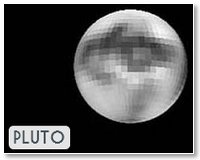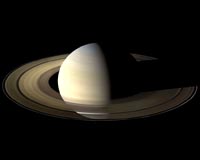|
 Quasar Pair Captured In Galaxy Collision
Quasar Pair Captured In Galaxy CollisionPasadena CA (SPX) Feb 08, 2010 This composite image shows the effects of two galaxies caught in the act of merging. A Chandra X-ray Observatory image shows a pair of quasars in blue, located about 4.6 billion light years away, but separated on the sky by only about 70 thousand light years. These bright sources, collectively called SDSS J1254+0846, are powered by material falling onto supermassive black holes. An optical image from the Baade-Magellan telescope in Chile, in yellow, shows tidal tails - gravitational-stripped strea ... read more |
. |
|
|
Free Space, Earth, Energy And Military Newsletters - Delivered Daily |
| . | . |
| .. |
Moon Exploration is Not Dead Sydney, Australia (SPX) Feb 02, 2010
Sydney, Australia (SPX) Feb 02, 2010It's clear by now that America's grand plans for returning astronauts to the Moon have been quashed, at least in the short term. The Constellation program, originally created to land astronauts there by 2020, is no more. But that doesn't mean that astronauts will not return in the future, nor does it mean that lunar exploration will cease in the meantime. NASA's Lunar Reconnaissance Orbite ... more Newborn Black Holes Boost Explosive Power of Supernovae  Huntsville AL (SPX) Feb 05, 2010
Huntsville AL (SPX) Feb 05, 2010An international team of scientists, including two astronomers from NASA's Marshall Space Flight Center in Huntsville, Ala., have observed a supernova with peculiar radio emission. In the Jan. 28 issue of Nature, the team - led by Zsolt Paragi of the Joint Institute for Very Long Baseline Interferometry in Europe, or JIVE - reveals new details of these highly energetic explosions. Supernov ... more Boulder Instrument Package To Study Space Weather Set For Launch  Boulder CO (SPX) Feb 05, 2010
Boulder CO (SPX) Feb 05, 2010A $32 million University of Colorado at Boulder instrument package set for launch Feb. 9 by NASA should help scientists better understand the violent effects of the sun on near-Earth space weather that can affect satellites, power grids, ground communications systems and even astronauts and aircraft crews. The CU-Boulder Extreme Ultraviolet Variability Experiment, or EVE, will fly on NASA' ... more |
.. |
 Blushing Pluto? Dwarf planet takes on a ruddier hue: NASA  NASA Extends Cassini's Tour Of Saturn  Instant online solar energy quotes Solar Energy Solutions from ABC Solar |
.. |
|
|
Free Space, Earth, Energy And Military Newsletters - Delivered Daily |
|
|
. |
 Quasar Pair Captured in Galaxy Collision
Quasar Pair Captured in Galaxy CollisionHuntsville AL (SPX) Feb 05, 2010 This composite image shows the effects of two galaxies caught in the act of merging. A Chandra X-ray Observatory image shows a pair of quasars in blue, located about 4.6 billion light years away, but separated on the sky by only about 70 thousand light years. These bright sources, collectively called SDSS J1254+0846, are powered by material falling onto supermassive black holes. An optical image from the Baade-Magellan telescope in Chile, in yellow, shows tidal tails - gravitational-stripped strea ... read more |
| The contents herein, unless otherwise known to be public domain, are Copyright 1995-2010 - SpaceDaily. AFP and UPI Wire Stories are copyright Agence France-Presse and United Press International. ESA Portal Reports are copyright European Space Agency. All NASA sourced material is public domain. Additional copyrights may apply in whole or part to other bona fide parties. Advertising does not imply endorsement, agreement or approval of any opinions, statements or information provided by SpaceDaily on any web page published or hosted by SpaceDaily. Privacy statement |
| Previous Issues | Feb 05 | Feb 04 | Feb 03 | Feb 02 | Feb 01 |